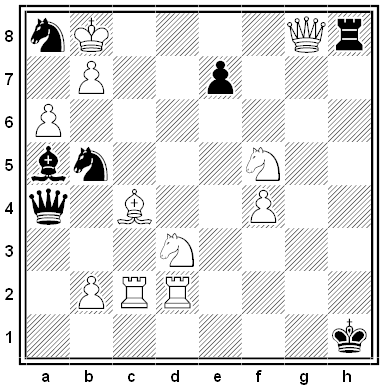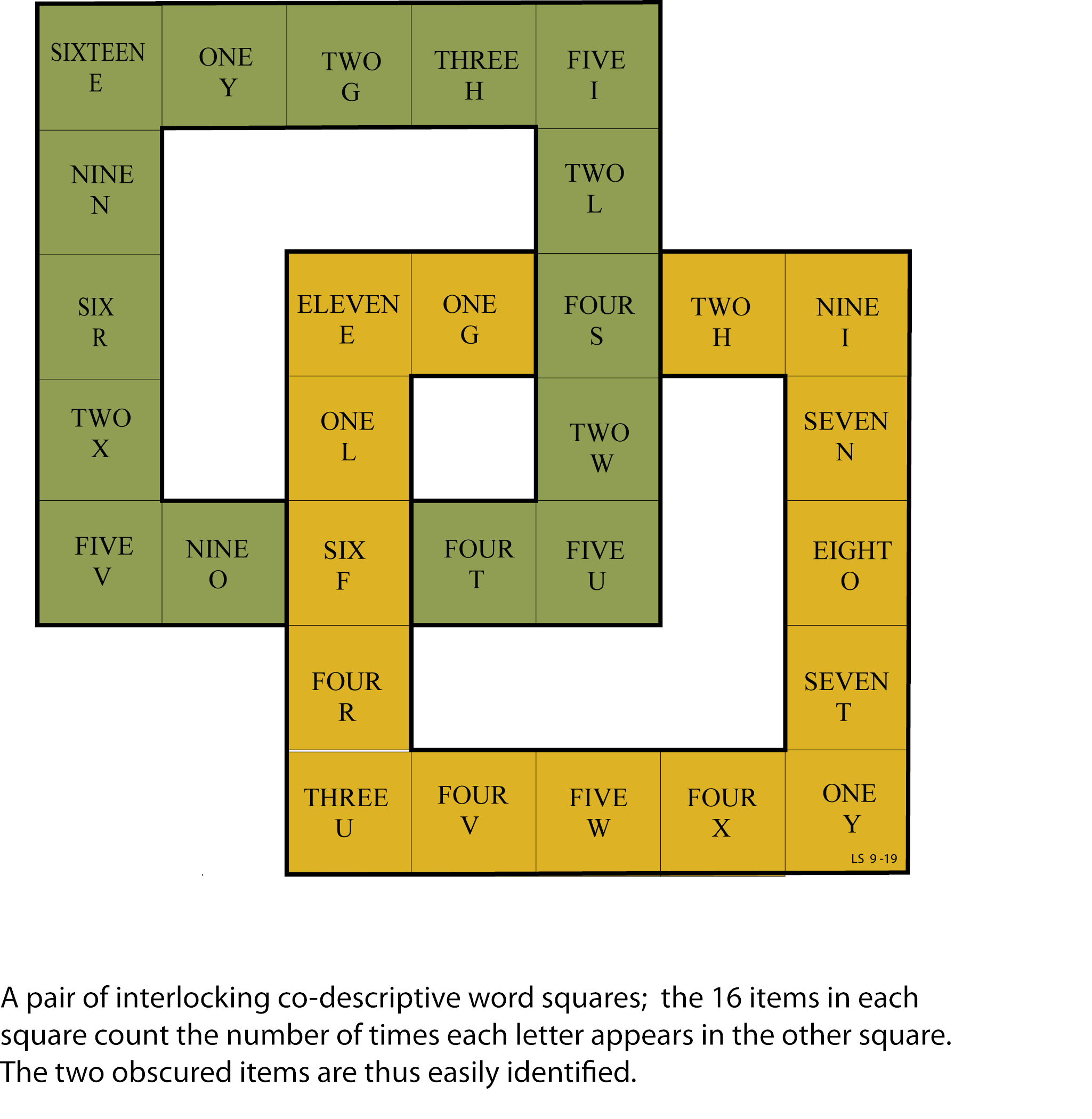An interesting query by Bob High, posed in the May-June 1994 issue of MIT Technology Review: Suppose a billiard ball with a small black dot precisely on its top is rolled around the full circumference of a circle of the same radius. Assuming no slippage or twisting, where is the dot when the ball returns to its starting point?
Author: Greg Ross
“A Pastoral”
A very efficient poem by Leigh Hunt:
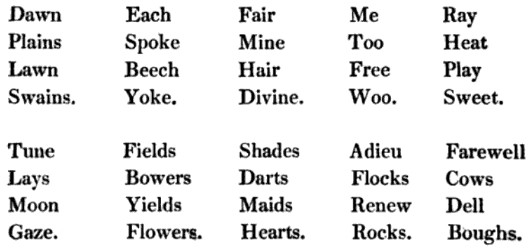
Here, without any more ado, we have the whole history of a couple of successful rural lovers comparing notes. They issue forth in the morning; fall into the proper place and dialogue; record the charms and kindness of their respective mistresses; do justice at the same time to the fields and shades; and conclude by telling their flocks to wait as usual, while they renew their addresses under yonder boughs. How easily is all this gathered from the rhymes! and how worse than useless would it be in two persons, who have such interesting avocations, to waste their precious time and the reader’s in a heap of prefatory remarks, falsely called verses!
From The Liberal, 1822.
Position
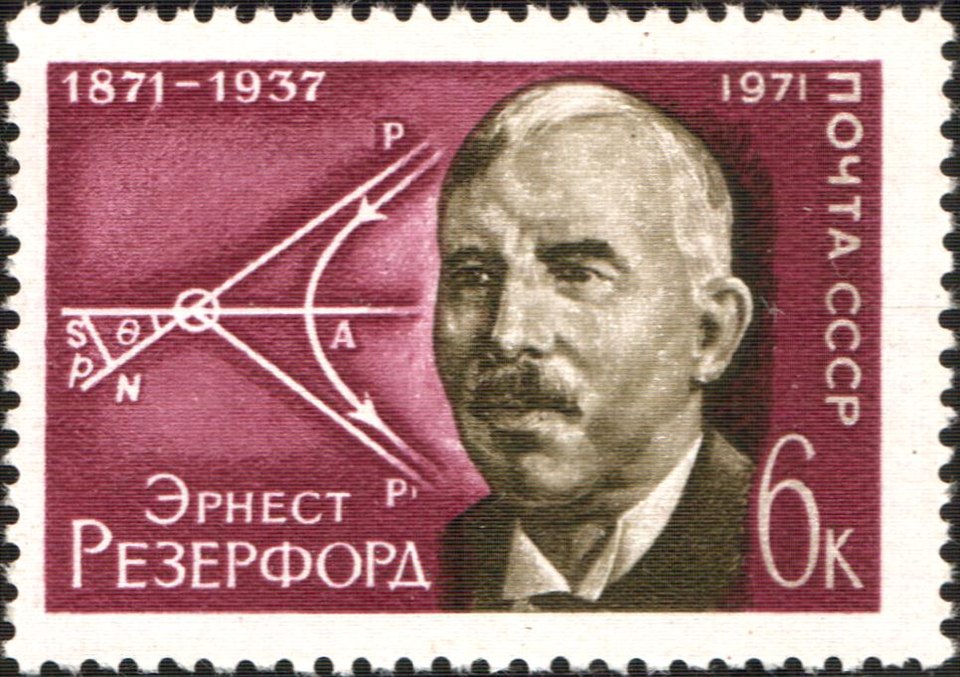
From an appreciation of Ernest Rutherford by C.P. Snow in the November 1958 issue of The Atlantic:
Worldly success? He loved every minute of it: flattery, titles, the company of the high official world. He said in a speech: ‘As I was standing in the drawing room at Trinity, a clergyman came in. And I said to him: “I’m Lord Rutherford.” And he said to me: “I’m the Archbishop of York.” And I don’t suppose either of us believed the other.’
Langford’s Problem
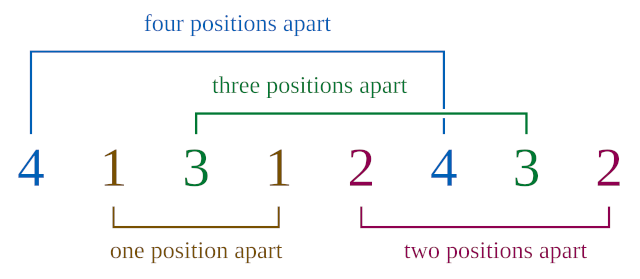
In the 1950s, mathematician C. Dudley Langford was watching his son play with blocks, two of each color, when he noticed that they formed a curious pattern: one block lay between the red blocks, two between the blue blocks, and three between the yellow blocks. Langford found that by rearranging the blocks he could add a green pair with four blocks between them.
This presented a clear challenge. He found solutions for as many as 15 pairs of blocks but came to believe that some smaller groupings (14 pairs, for example) could not produce a solution. He asked for a general investigation.
Today we know that a solution exists if and only if the number of blocks is 4k or 4k + 3, so Langford was right that no solution can be arranged with 14 pairs of blocks. The number of solutions for each quantity of pairs is listed here, and a few proofs are given here.
(C. Dudley Langford, “Problem,” Mathematical Gazette 42:341 [October 1958], 228.)
Still Waiting
In a 1901 parody edition, the journal Mind! offered £1,000 to any philosopher who could produce adequate documentary evidence that he:
- Knows what he means.
- Knows what anyone else means.
- Knows what everyone means.
- Knows what anything means.
- Knows what everything else means.
- Means what he says.
- Means what he means.
- Means what everyone else means.
- Means what everyone else says that he means.
- Can express what he means.
- Knows what it signifies what he means.
- Knows what it matters what he signifies.
“At first sight it might seem as though the Twelve Labours of Hercules would be in comparison with this a slighter achievement,” the editors wrote. “But in view of the extensive and peculiar knowledge of the Absolute’s Mind which is now possessed by so many philosophers, a large number of solutions may confidently be expected.”
Oh, Never Mind
A man of the State of Chêng was one day gathering fuel, when he came across a startled deer, which he pursued and killed. Fearing lest any one should see him, he hastily concealed the carcass in a ditch and covered it with plantain leaves, rejoicing excessively at his good fortune. By and by, he forgot the place where he had put it, and, thinking he must have been dreaming, he set off towards home, humming over the affair on his way.
Meanwhile, a man who had overheard his words, acted upon them, and went and got the deer. The latter, when he reached his house, told his wife, saying, ‘A woodman dreamt he had got a deer, but he did not know where it was. Now I have got the deer; so his dream was a reality.’ ‘It is you,’ replied his wife, ‘who have been dreaming you saw a woodman. Did he get the deer? and is there really such a person? It is you who have got the deer: how, then, can his dream be a reality?’ ‘It is true,’ assented the husband, ‘that I have got the deer. It is therefore of little importance whether the woodman dreamt the deer or I dreamt the woodman.’
Now when the woodman reached his home, he became much annoyed at the loss of the deer; and in the night he actually dreamt where the deer then was, and who had got it. So next morning he proceeded to the place indicated in his dream, — and there it was. He then took legal steps to recover possession; and when the case came on, the magistrate delivered the following judgment:– ‘The plaintiff began with a real deer and an alleged dream. He now comes forward with a real dream and an alleged deer. The defendant really got the deer which plaintiff said he dreamt, and is now trying to keep it; while, according to his wife, both the woodman and the deer are but the figments of a dream, so that no one got the deer at all. However, here is a deer, which you had better divide between you.’
— Herbert Allen Giles, A History of Chinese Literature, 1927
A Code Poem
On April 1, 1990, an anonymous verse was posted to the comp.lang.perl newsgroup on Usenet. It was written in the programming language Perl 3:
BEFOREHAND: close door, each window & exit; wait until time.
open spellbook, study, read (scan, select, tell us);
write it, print the hex while each watches,
reverse its length, write again;
kill spiders, pop them, chop, split, kill them.
unlink arms, shift, wait & listen (listening, wait),
sort the flock (then, warn the "goats" & kill the "sheep");
kill them, dump qualms, shift moralities,
values aside, each one;
die sheep! die to reverse the system
you accept (reject, respect);
next step,
kill the next sacrifice, each sacrifice,
wait, redo ritual until "all the spirits are pleased";
do it ("as they say").
do it(*everyone***must***participate***in***forbidden**s*e*x*).
return last victim; package body;
exit crypt (time, times & "half a time") & close it,
select (quickly) & warn your next victim;
AFTERWORDS: tell nobody.
wait, wait until time;
wait until next year, next decade;
sleep, sleep, die yourself,
die at last
Because of the large number of English words that are used in the Perl language, the poem can actually be compiled as legal code and executed as a program. (It exits on line one, reaching the function exit, producing no output.)
The poem was attributed to “a person who wishes to remain anonymous,” but new “Perl poems” are regularly submitted to the programming community at PerlMonks.
Nothing Ventured
A dentist spotted a deadbeat patient while dining at his country club one evening. He called the patient aside, reminded him that he owed him $250 for work done more than two years earlier, and insisted the man pay up. To the dentist’s astonishment, the patient pulled a checkbook from his pocket and wrote a check to the dentist for the full amount.
Skeptical about the patient’s good faith, the dentist went directly to the bank the next morning and presented the check for payment. The teller handed it back with the explanation that the patient’s account was a little short of the amount of the check. Following a few minutes of good-natured conversation the dentist learned that the man’s account was twenty-five dollars short of the needed amount. The dentist smiled, went to the customers’ desk for a few minutes, came back to the teller, deposited thirty dollars to the account of the patient, and then again presented the check for $250 and walked out with a net gain of $220.
— Ralph L. Woods, How to Torture Your Mind, 1969

